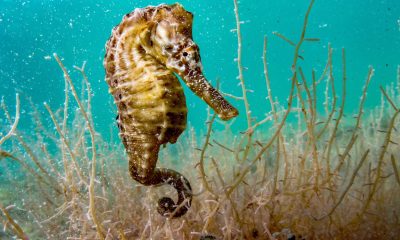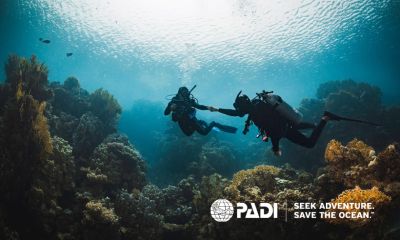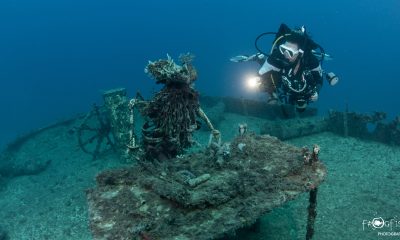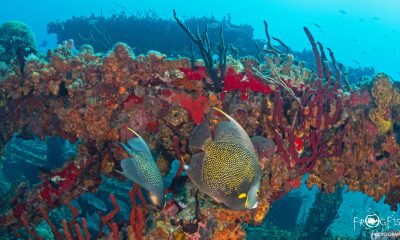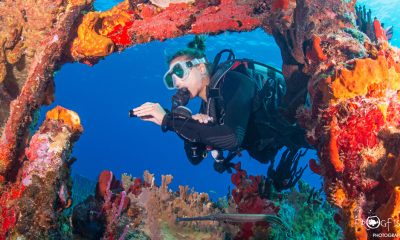Blogs
Photo Gallery: St Eustatius
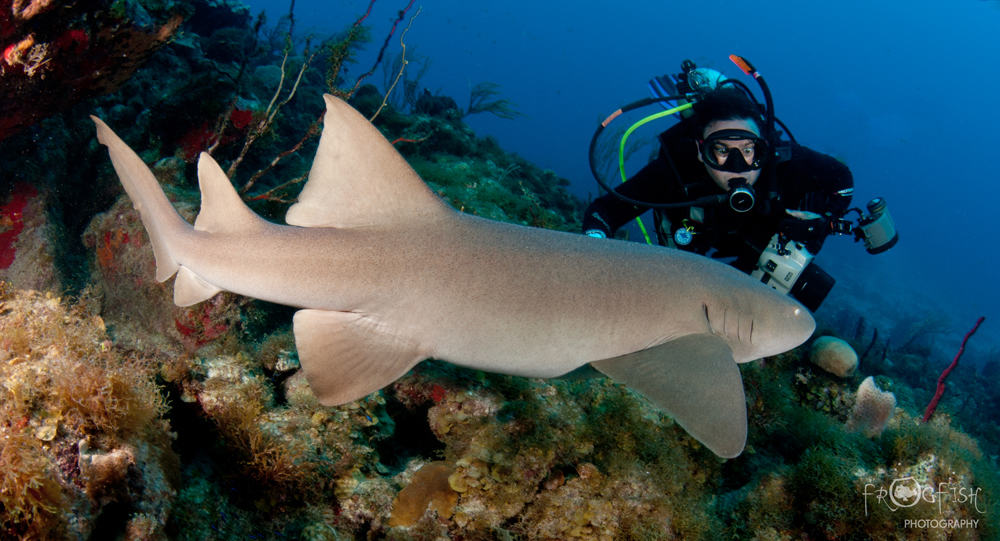
In our new Gallery feature, we let the photos tell the story… Each Gallery showcases a selection of outstanding images on a chosen theme, taken by our Underwater Photography Editors Nick and Caroline of Frogfish Photography. This week, we focus on the tiny but beautiful Caribbean Island of St. Eustatius.
St Eustatius is a Caribbean island that is very close to our hearts. We lived on this volcanic island, working as dive instructors at Dive Statia, when we first started out in the diving world. We also worked as marine park wardens for a few months at the end of our stay. We were involved in the sinking of the island’s most famous wreck, and were the first people to dive, the 100 metre long Charlie Brown. Statia (as it is fondly known) is a small island with some great diving. Almost all of its coastline is a protected marine park, and this really apparent when you head underwater and see the amazing marine life. Turtles thrive here, and are found sleeping on the artificial reefs at night. You may never have heard of St Eustatius, but once you have been there, your heart will never leave. Visit www.scubaqua.com and www.statia-tourism.com to find out more.

Image 1: A hawksbill turtle on the Charlie Brown wreck. The turtle’s flipper briefly touches my camera dome as it swims past. The wreck of the Charlie Brown has been underwater for over 10 years now and plenty of marine life has made it their home.

Image 2: Nurse sharks live in many of the overhangs that are cut into the reef and this one surprised Caroline. As you can see, fantastic visibility is common around these waters, so when we visit, we like to shoot in wide angle.

Image 3: Huge barrel sponges sit on the tops of the reef, and Caroline has posed near this one to show off its size. If you look inside these sponges you might find a turtle, porcupine fish, arrow crabs and more.

Image 4: The bow of the Charlie Brown. The odd shape of the bow is because this ship used to be a cable layer. I think this shot works very well in black and white and the diver really emphasises the huge size of this impressive wreck that lies in 30m of water.

Image 5: The reef is in fabulous condition, as it has been a marine park since 1996 with all waters protected that are 30m deep or shallower. In this shot, Caroline approaches a trumpetfish, with her fins high in the water so as not to touch any part of the reef.

Image 6: There are a whole host of wrecks that have been sunk as artificial reefs on Statia. This tug boat is one of the oldest and has amazing coral and sponge growth on it and in it. It this shot, Caroline has gone into the wheelhouse carrying strobes that fired remotely, so that Nick could light both the bow of the boat and the inside of the wheelhouse at the same time.

Image 7: A final shot of one of our favourite wreck dives – the Charlie Brown. You can see here the amazing visibility as you descend towards to the wreck in clear blue Caribbean water. We have returned to the island on several occasions, and it has been amazing to see how the marine life continues to make this into a home. I hope we can return soon.
Want to hear more?
Here is Dive Centre Owner Mike talking about Statia:
https://www.scubaverse.com/dema-2016-review-scubaverse-talks-mike-scubaqua-st-eustatius-watch-video/
For more from Nick and Caroline, visit www.frogfishphotography.com
Blogs
BVI Wreck Week – Diving (Part 3)

![]() BVI Wreck Week allowed us to dive several of the wrecks the BVI has to offer, as well as sampling some of the best reef sites too. Our previous blog focused on the wreck of the RMS Rhone, so in this one we will try to give you a taste of the rest of the diving on offer.
BVI Wreck Week allowed us to dive several of the wrecks the BVI has to offer, as well as sampling some of the best reef sites too. Our previous blog focused on the wreck of the RMS Rhone, so in this one we will try to give you a taste of the rest of the diving on offer.
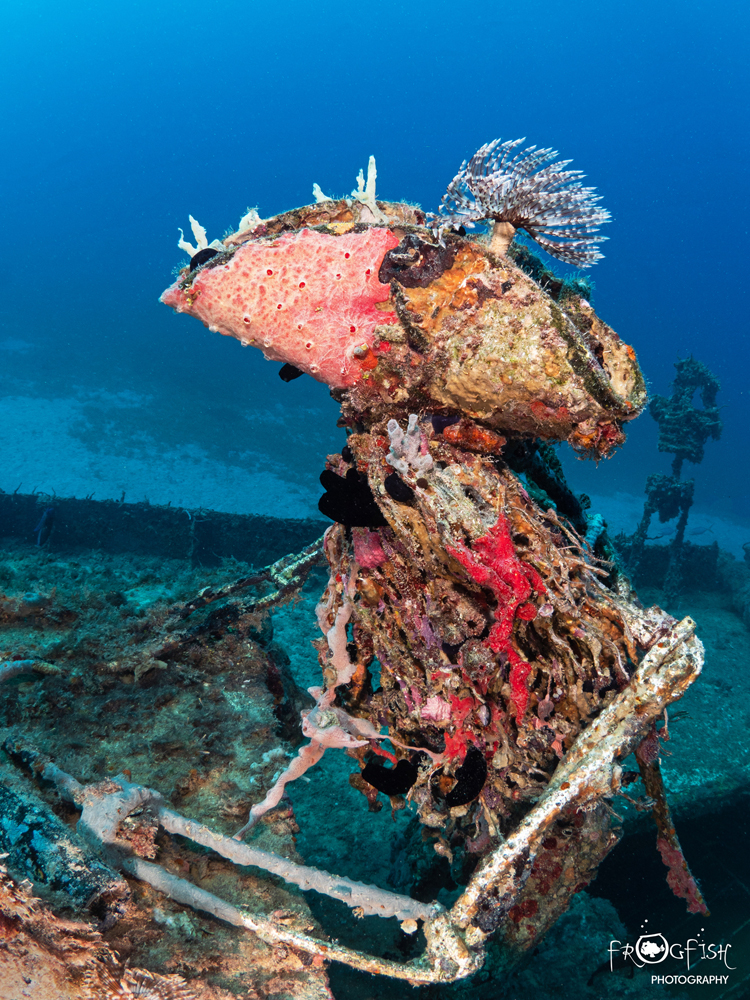
And there is a great deal of wonderful diving to tell you about. Our first day of diving did not offer the best visibility due to heavy rain earlier in the week. However, we were taken to a rugged dive site that had Caribbean and Lemon Sharks swimming all around us. If we had been able to see the usual 20m+ I am sure we would have been able to talk of dozens of sharks on the site.
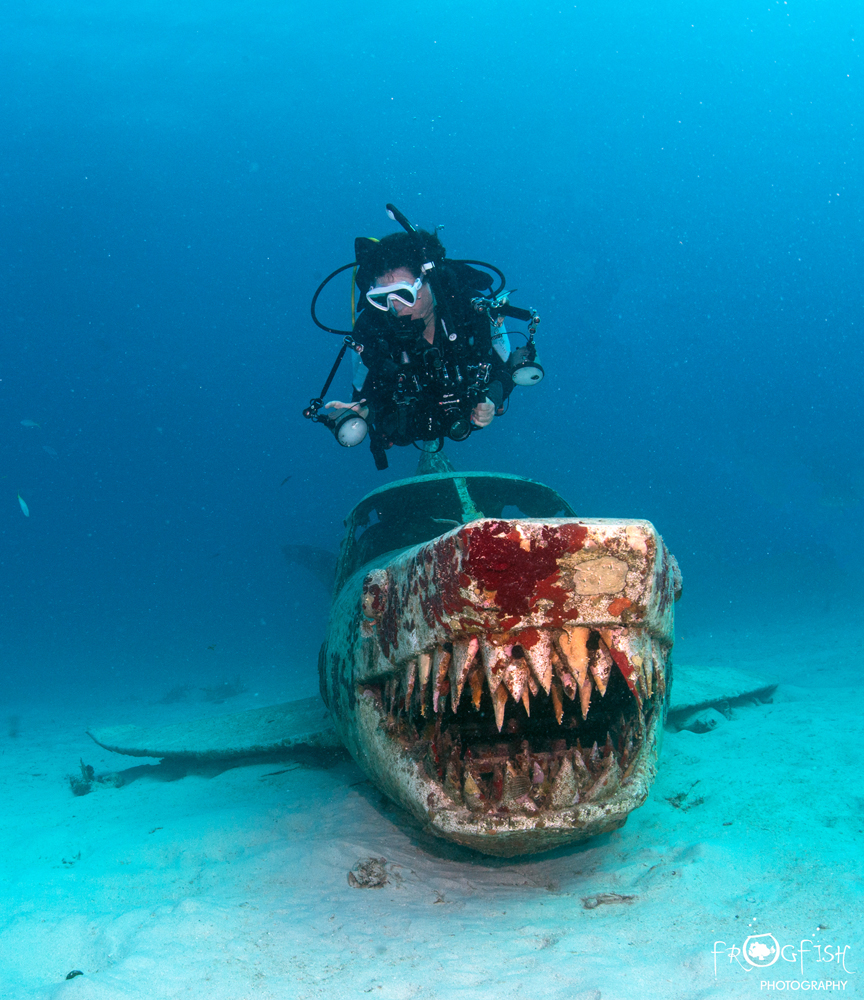
The BVI has plenty of artificial reefs, created from wrecks deliberately sunk. A couple of these are artistic creations from Beyond the Reef. The Willy T is a pirate themed party boat sunk in shallow water that now has skeletons of pirates duelling on the deck and going about their dastardly ways. It is a lot of fun and once you have had your fill, you can head up onto the shallow reef. Shark-plano is a series of three planes that were damaged in a hurricane, that have been turned into shark species and sunk. Both these sites are perfect for the diver that loves a bit of Instagram appeal!
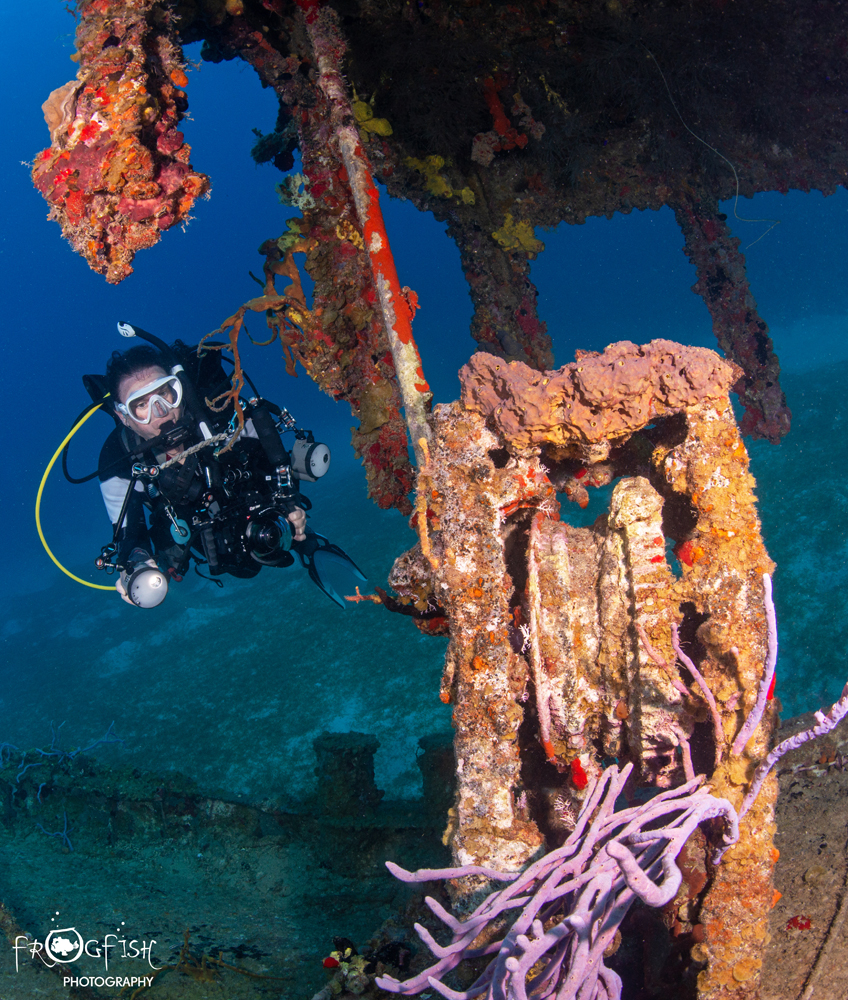
Wreck Alley has a series of three boats sunk to create a super dive site perfectly aligned for a single dive where you can explore them all. Moray eels can be seen free swimming along the decks, huge stingrays back the sandy seabed their home. Turtles cruise past as you make your way around and then up onto the reef for your safety stop.
On every dive we did we saw sharks which absolutely delighted us. The local dive shops seem to be particularly engaged in conserving the reefs, taking part in coral reef restoration, lionfish hunting, cleanups and logging their sightings. We were filled with positivity at the end of each day.
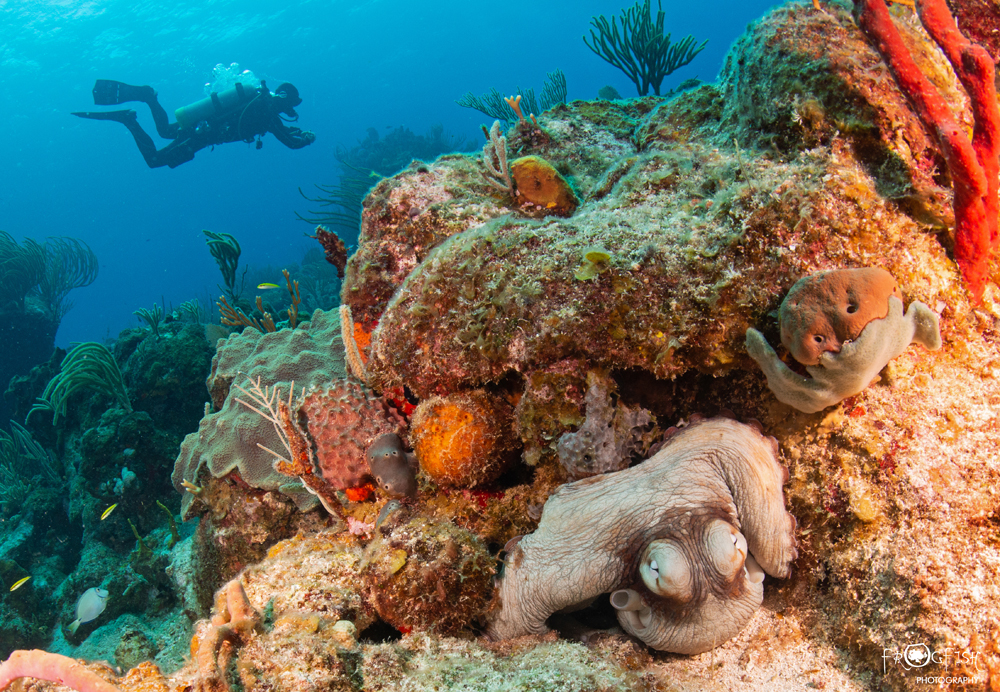
We hope that we can return to do it all again at BVI Wreck Week 2024!
Watch out for our full feature on BVI Wreck Week in the next issue of Dive Travel Adventures coming out in July.
For more information about BVI Wreck Week 2024 visit their website here.
Nick and Caroline were hosted by BVI Wreck Week
The Moorings provided their yacht for the week
Host Dive Centres:
Blogs
BVI Wreck Week – Diving the RMS Rhone (Part 2)
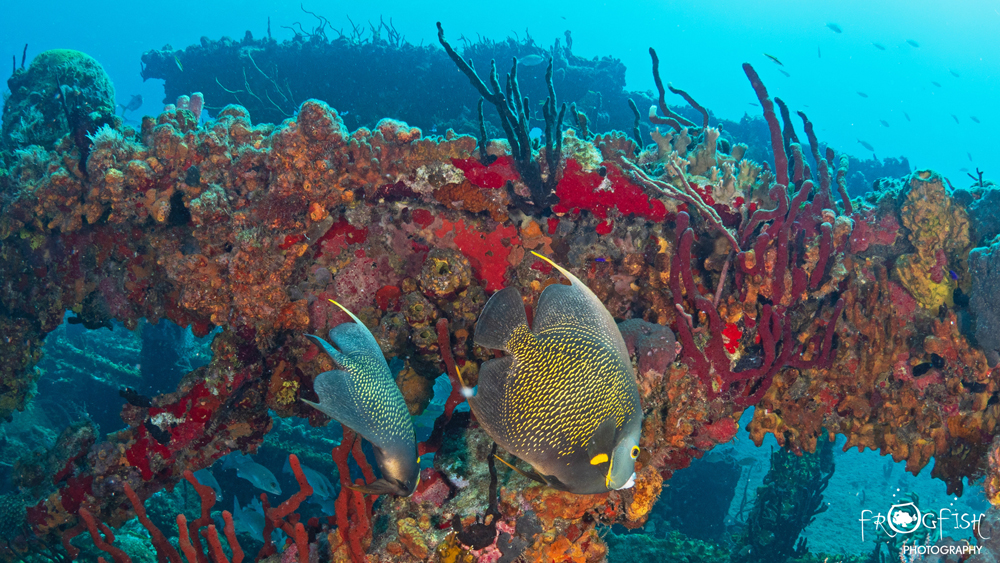
![]() You cannot talk about BVI Wreck Week, or diving in the British Virgin Islands, without spending some time on the jewel in their crown of wreck diving – the RMS Rhone. So this blog is going to be dedicated to a wreck dive that we were happy to dive three times on our trip and would have been happy to dive every day!
You cannot talk about BVI Wreck Week, or diving in the British Virgin Islands, without spending some time on the jewel in their crown of wreck diving – the RMS Rhone. So this blog is going to be dedicated to a wreck dive that we were happy to dive three times on our trip and would have been happy to dive every day!
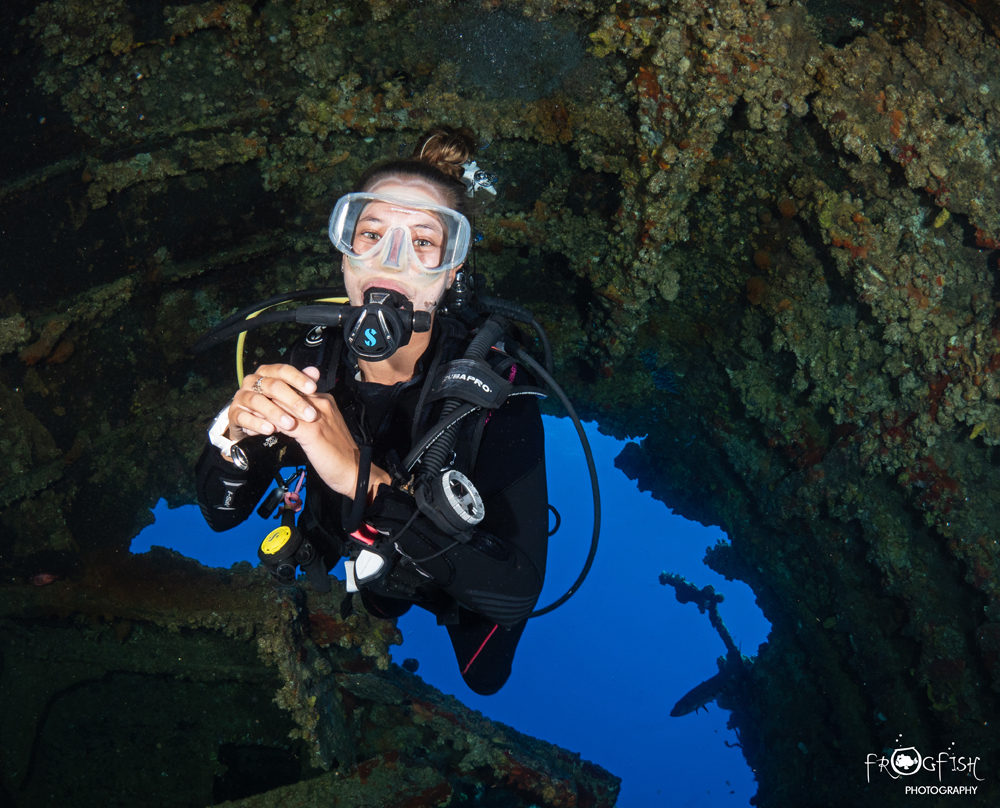
The RMS Rhone was a UK Royal Mail Ship wrecked off the coast of Salt Island on 29 October 1867 in a deadly hurricane. Now it is the most popular dive site in the region. The dive briefings for the site are filled with stories of the fate of the ship and some eye-opening tales since.
The wreck and surrounding area become the British Virgin Island’s first national marine park in 1980. Many of the underwater segments of the 1977 thriller The Deep were filmed on the Rhone, requiring actors Jacqueline Bisset, Nick Nolte and Robert Shaw to learn how to scuba dive.
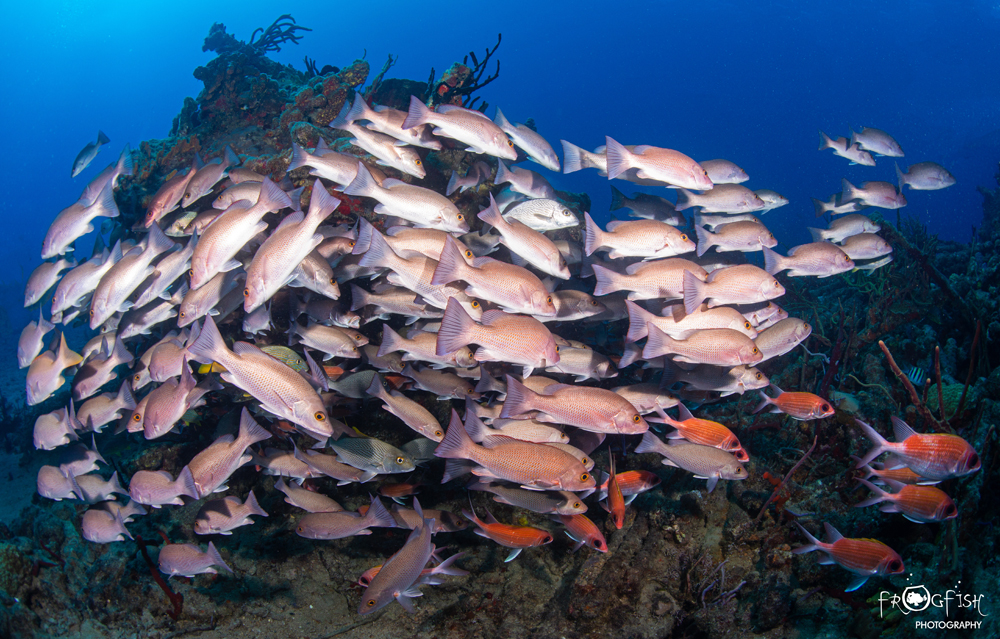
You’ll need at least two dives to fully experience the RMS Rhone. The ship split apart on sinking and the bow drifted just a little before sinking. The two halves are about 100 feet apart with the bow sitting in deeper water (around 25 meters / 80ft). So you are best to explore the bow fully on a single dive and then head to the stern on your second dive.
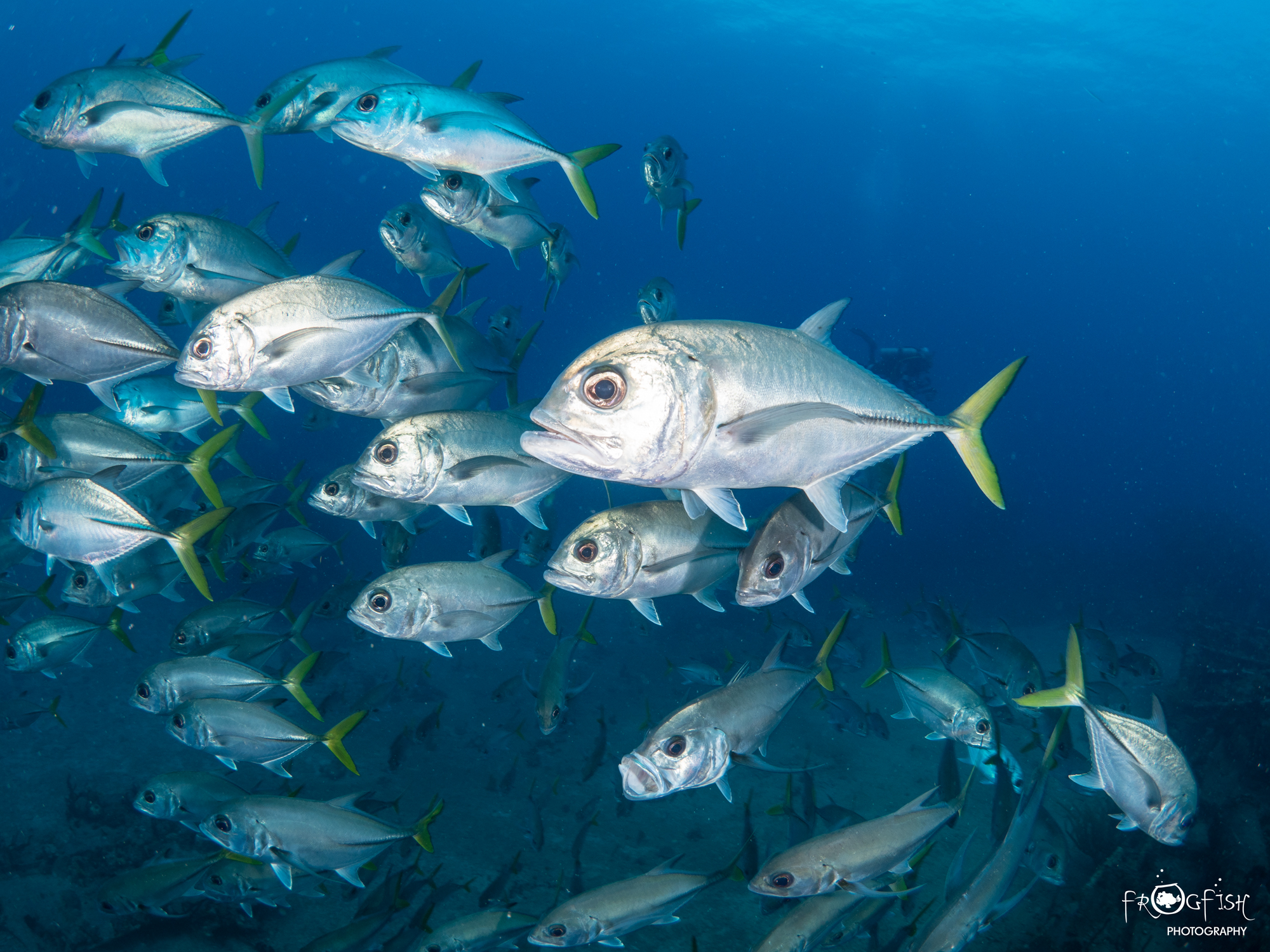
Whilst the history, artifacts and stories from the movies are absorbing, as soon as we got underwater to dive her, it was the incredible marine life that had us hooked. Two seahorses had made their home right at the bow of the wreck. Stingrays lay buried in the sandy sea bed. The structure is covered in colourful corals and sponges. Schools of fish occupy the overhangs and metal remains. We saw sharks on all three dives and were treated to a huge spotted eagle ray gliding over the wreck. Lobsters waved their antennae at us from every crevice. Life is everywhere you look on this dive.
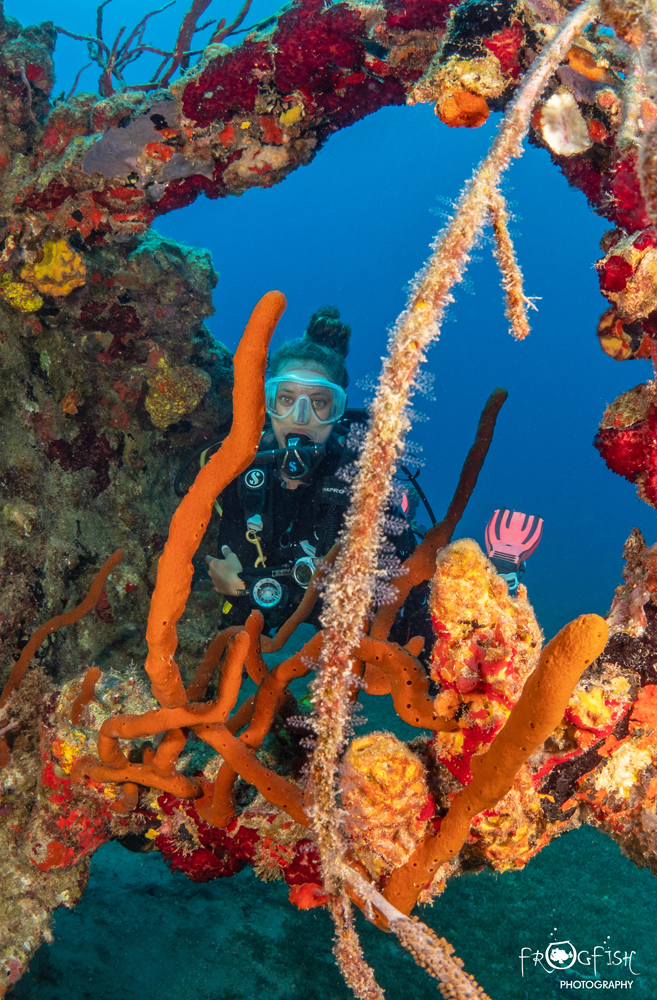
The marine park status has certainly ensured that this is one of the best wrecks we have dived in the Caribbean. Whilst we did not get the chance to do this – we bet it would make an awesome night dive.
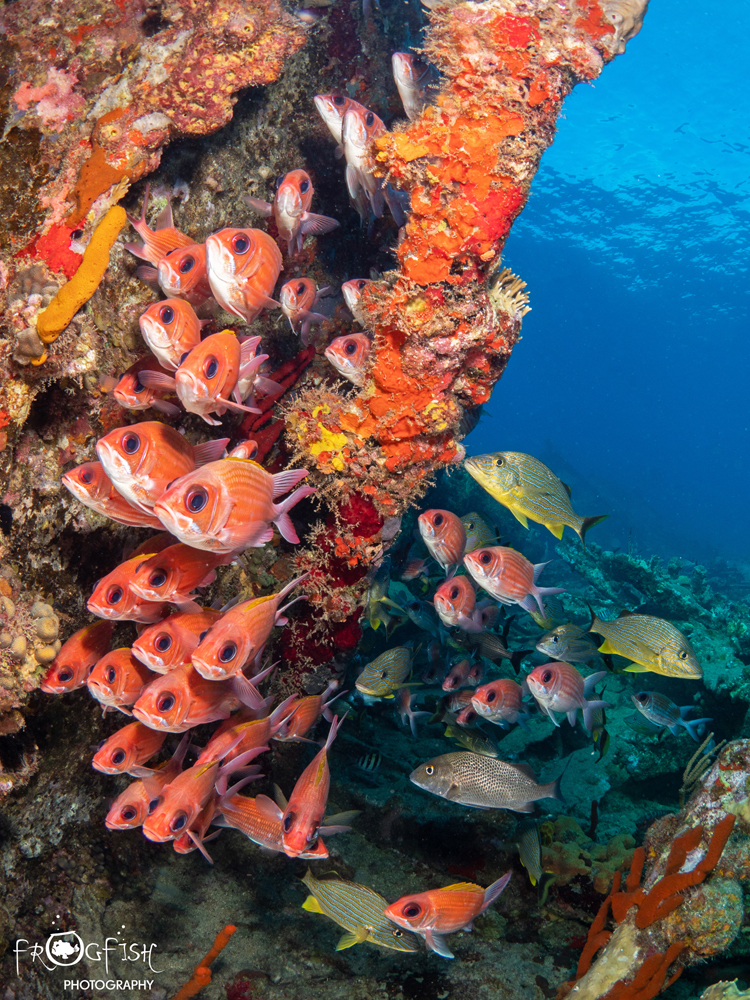
Check out our next blog to find out more about the diving and watch out for our full feature in the next edition of Dive Travel Adventures Magazine in July!
For more information about BVI Wreck Week 2024 visit their website here.
Nick and Caroline were hosted by BVI Wreck Week
The Moorings provided their yacht for the week
Host Dive Centres:



